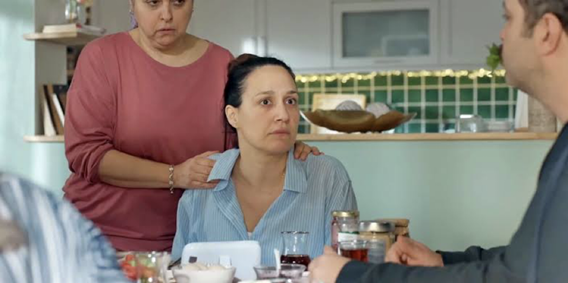Keywords: Lohusa, Postpartum, Woman, Gupse Özay, Trouble, Cinema, Audience, Comedy
Gupse Özay, the author, and Kıvanç Baruönü, the director, bring "Lohusa" to the big screen. This comedy film, released on January 19th this year, has quickly gained popularity. According to Box Office results, it maintained its top spot at the box office with 848,000 viewers in just 10 days after its release.
https://boxofficeturkiye.com/haber/box-office-turkiye-lohusa-yaklasik-254-bin-seyirciyle-liderligini-korudu--5722

Lohusa Movie Poster
What Is Lohusa (Postpartum)?
According to the narrative by the screenwriter and actress Gupse Özay, the film originates from her struggle with the inability to write during the postpartum period. She finds herself unable to focus on the screenplay she wrote after giving birth. She decides to capture the current phase of her life instead, giving rise to "Lohusa". Interestingly, this term is widely known among the public: "LOHUSA"
In essence, it refers to the period a woman goes through after childbirth, encompassing elements such as blood, tears, sleep deprivation, fatigue, fear, and anxiety. Before writing the film, our talented female writer conducts a public survey and discovers that her personal struggles resonate with many women in her country. Much like a nature photographer capturing a beautiful moment, she seamlessly blends this struggle with the comedy genre. However, be sure to have tissues on hand – even though it's a comedy, don't be surprised if your eyes well up with tears.

Lohusa / Breakfast Scene
In this film, what perhaps makes it exceptional is not just its portrayal of struggles but also its thorough depiction of where those struggles stem from. The narrative unfolds around a couple, with the female character being pregnant. They have friends and an assistant at home, and when everyone insists that she should experience postpartum, she stubbornly decides to take on the challenge.
As a result, all the postpartum challenges intensify. However, as mentioned, the film doesn't merely present the struggles. It devotes attention to the resolution towards the end. This provides the audience with an answer to the question, "So what should we do?" We learn from the writer how the burdens on the woman, the mother, can be alleviated. We witness the fathers dismissing the idea that they have any role to play, a critical point in the story. Why does the burden fall on the woman in couples becoming parents with the birth of a child? In reality, fathers also have a role in this story, delicately addressed in the narrative.
The film suggests that with the help of loved ones, the burden of troubles diminishes. Just as always, this story follows the same pattern. The audience leaves the movie with pockets full, having come for laughter but gaining more. Most importantly, the film silences those who criticize women's humor as shallow, turning rising voices into hearty laughter.
Well done to the Lohusa Team!
Yağmur İnce
Yucel Cultural Foundation
Voluntary Author
translated by Ekremcan Bakır
YKV Content:1541